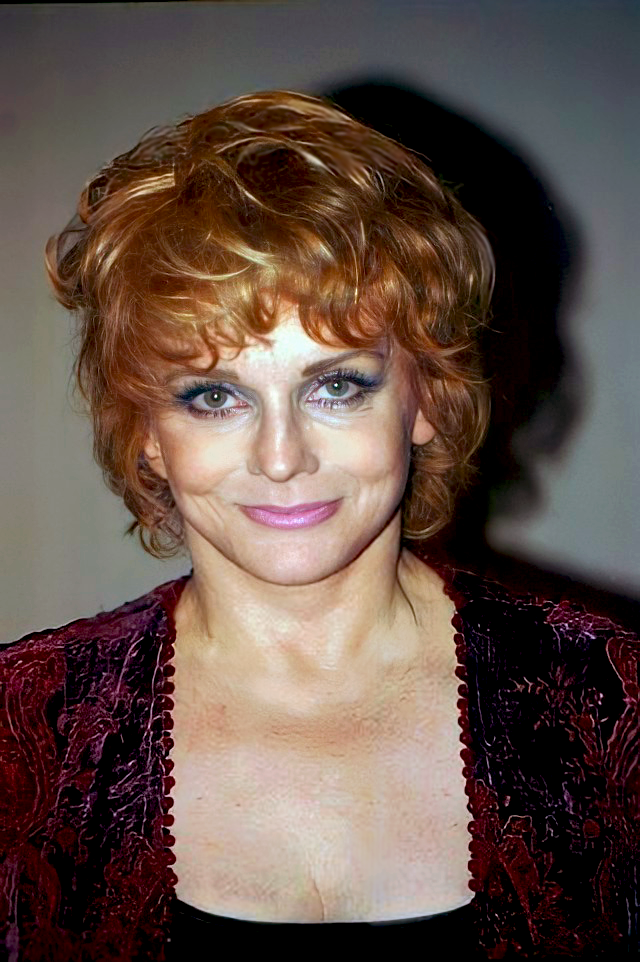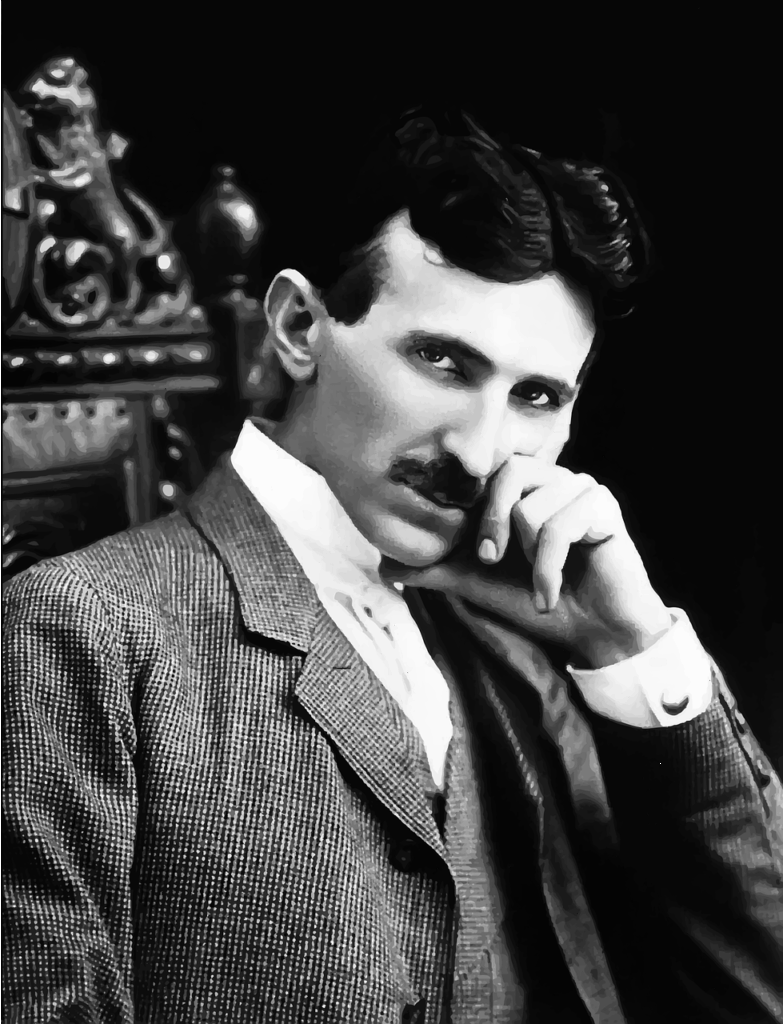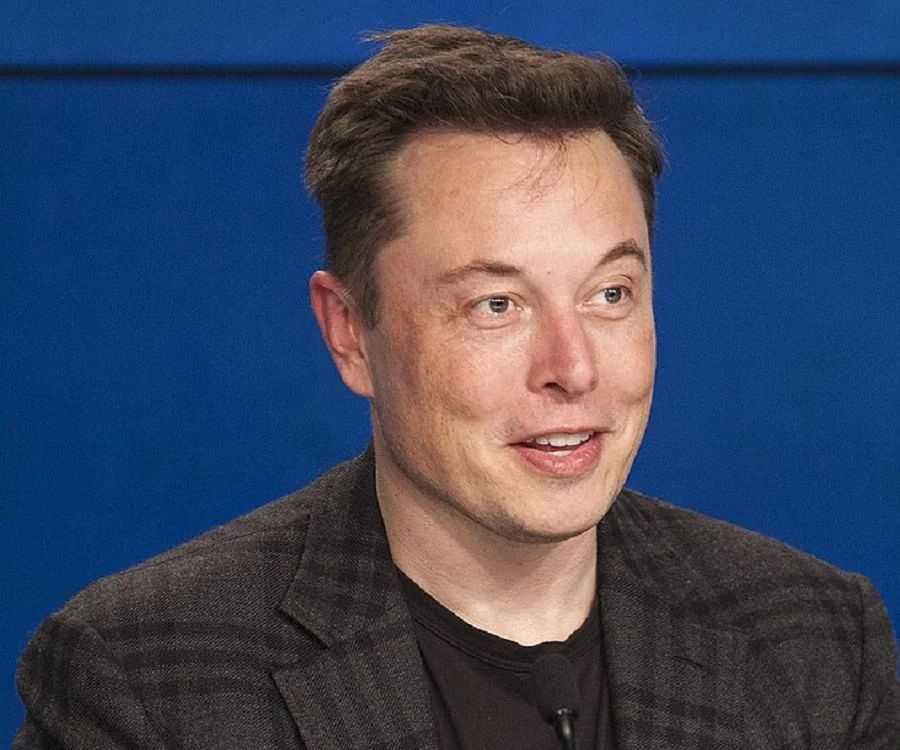Angelina Jolie. The name itself conjures images of powerful performances, undeniable beauty, and a global humanitarian presence that has touched countless lives. From her captivating roles on screen to her tireless work advocating for refugees across the world, Jolie has carved out a unique and indelible place in the public consciousness. She is not merely a celebrity; she is a force, a multifaceted individual whose journey has been as complex and challenging as it has been inspiring and celebrated. Her life, marked by intense personal narratives and profound professional achievements, offers a compelling look at a woman who continually defies expectations.
Her career spans decades, evolving from a “punk kid with tattoos” to an Academy Award-winning actress, a respected filmmaker, and an influential voice for global causes. We’ve witnessed her transform on screen, embody fierce characters, and deeply engage with stories of human resilience. Yet, beyond the glittering lights of Hollywood, lies a profound personal commitment to making a tangible difference in the world, a dedication that often takes her to the most vulnerable corners of our planet. This duality of public persona and private passion defines much of her enduring appeal.
In this deep dive, we’ll journey through the chapters of Angelina Jolie’s extraordinary life, exploring the formative experiences that shaped her, the cinematic milestones that cemented her legendary status, and the unwavering humanitarian spirit that has become a cornerstone of her identity. Prepare to explore the intimate details and pivotal moments that have defined one of the most powerful and influential figures in contemporary culture.

1. A Childhood Forged in Hollywood Shadows and Personal Turmoil
Born Angelina Jolie Voight on June 4, 1975, in Los Angeles, California, Angelina’s early life was linked to entertainment, with her parents Jon Voight and Marcheline Bertrand, both actors. However, this early exposure to Hollywood glamour was overshadowed by personal upheaval. Following her parents’ separation in 1976, Angelina and her brother, James Haven, were raised primarily by their mother, Marcheline, who deliberately stepped away from her own acting ambitions to devote herself fully to her children. This decision deeply influenced Jolie, fostering resilience and a desire for meaningful connection despite the backdrop of her father’s successful career.
Jolie’s formative years were not without significant challenges. While attending Beverly Hills High School, she found herself feeling isolated among her more affluent peers, often teased for her thin physique, glasses, and braces, a stark contrast to the glamorous image she would later embody. Her mother’s more modest income meant she felt an outsider, leading her to transfer to Moreno High School, an alternative school. It was during this period that she embraced a “punk outsider” identity, characterized by all-black clothing, moshing, and even engaging in knife play with her live-in boyfriend. This rebellious phase expressed her internal struggles and difficulty connecting emotionally.
The teenage years were particularly difficult, marked by self-harm, which she later described as a “ritual of having cut myself and feeling the pain, maybe feeling alive, feeling some kind of release, it was somehow therapeutic to me.” She grappled with insomnia and an eating disorder, and by age 20, had experimented with “just about every drug possible,” notably heroin. These profound struggles culminated in depression and two documented suicide attempts, at ages 19 and 22, the latter involving an attempt to hire a hitman. Her emotional turmoil peaked at 24 when she experienced a nervous breakdown and was admitted to UCLA Medical Center’s psychiatric ward.
A pivotal turning point arrived two years later with the adoption of her first child, Maddox. This profound commitment brought a newfound stability to her life. She later stated, “I knew once I committed to Maddox, I would never be self-destructive again.” This personal journey through adversity highlights the immense strength and transformation that shaped her into the empathetic humanitarian she would become.
Read more about: Audrey Hepburn: Beyond the Icon — A Deep Dive into Her Life, Legacy, and Unforgettable Impact on Film and Humanity
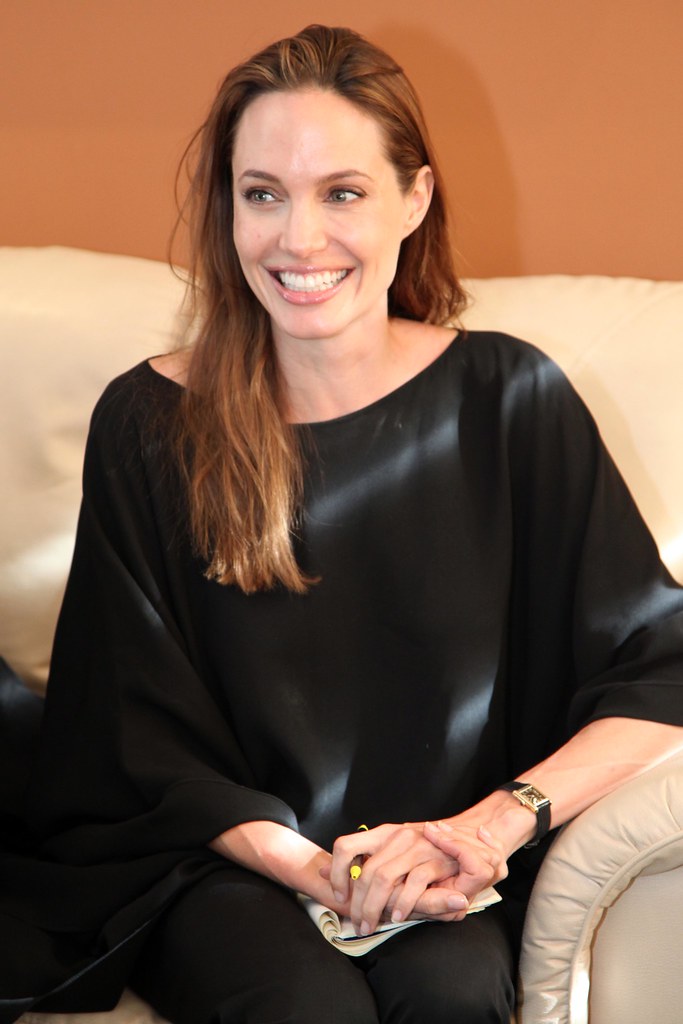
2. The Complex Ties That Bind: Angelina’s Evolving Relationship with Father Jon Voight
Angelina Jolie’s relationship with her father, Jon Voight, has been a lifelong saga marked by complexity, estrangement, and reconciliation. Their dysfunctional dynamic began when Voight left the family when Jolie was less than a year old, establishing a pattern where their interactions were often sporadic and, as Jolie herself noted, “usually carried out in front of the press.” This public aspect of their struggles added scrutiny to an already strained familial bond, influencing her early perceptions of fame and family.
A significant, albeit temporary, reconciliation occurred when they shared the screen in 2001’s Lara Croft: Tomb Raider. However, this professional collaboration did not mend all personal rifts, and their relationship soon deteriorated again. The emotional weight of their history led Jolie to petition the court to legally remove her surname, Voight, choosing her middle name, which she had adopted as her stage name. The name change was granted on September 12, 2002, a public declaration of her desire for identity separate from her father’s shadow.
The estrangement became acutely public when Jon Voight appeared on Access Hollywood, controversially claiming that Jolie had “serious mental problems.” This public accusation led to her mother and brother also breaking off contact with him, further widening the chasm within the family. For six and a half years, Angelina and her father did not speak, a silence that underscored the depth of their unresolved issues and the emotional toll it took on them both.
The path to rebuilding their relationship began in the wake of Marcheline Bertrand’s death from ovarian cancer on January 27, 2007. This shared grief and loss provided a catalyst for a gradual reconciliation, which they both publicly acknowledged three years later. Their journey, from a broken bond to a public mending, illustrates the enduring power of family ties and the capacity for forgiveness even after years of distance.
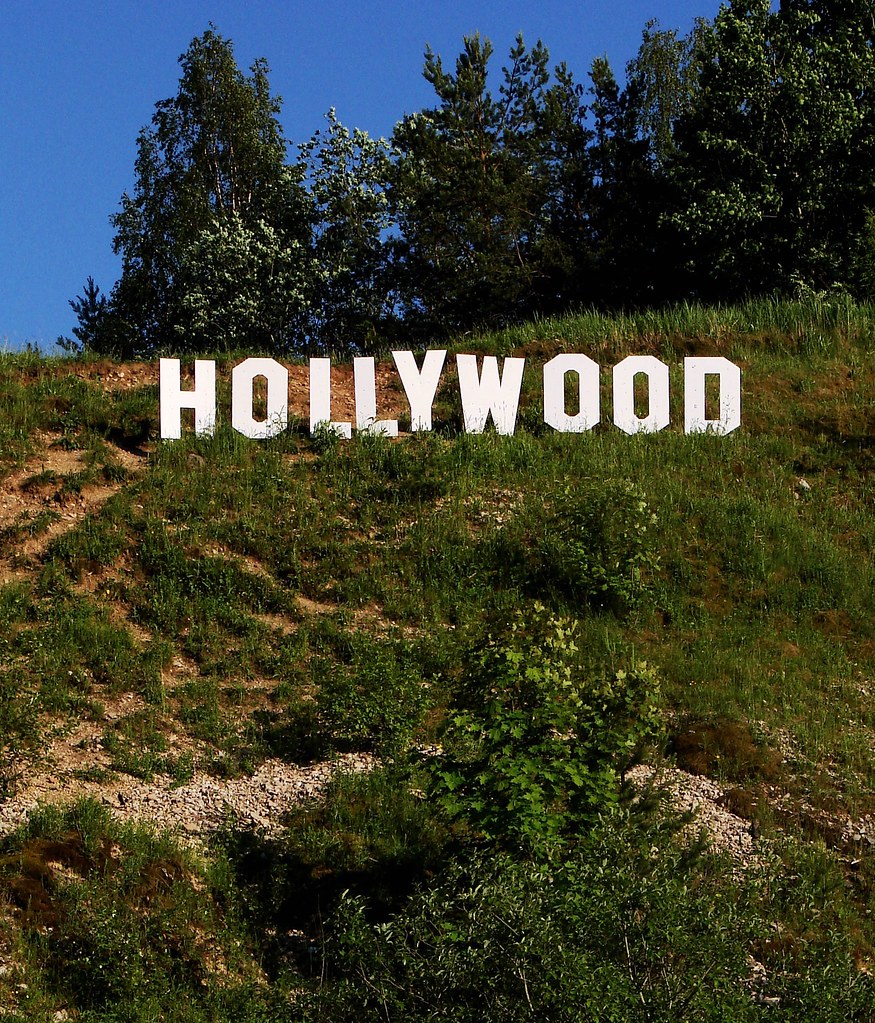
3. From Indie Beginnings to Hollywood’s Radar: Jolie’s Path to Stardom
Angelina Jolie officially committed to acting professionally at the age of 16, embarking on a career path that would eventually make her one of Hollywood’s most recognized faces. Her initial attempts were met with challenges; she was often told her demeanor was “too dark” during auditions. Despite these early rejections, she gained experience through various projects, including appearing in five student films made by her brother, James Haven, and featuring in several music videos for artists like Lenny Kravitz, Antonello Venditti, The Lemonheads, and Meat Loaf. This foundational work, though not yielding immediate stardom, was crucial for honing her craft and understanding the industry.
Her professional film career truly began in 1993 with a leading role in the direct-to-video science-fiction sequel, Cyborg 2, where she portrayed a near-human robot. Her experience on this film was so disheartening that she chose not to audition for an entire year afterward, a testament to the difficult and often unglamorous reality of early career starts. However, her resilience shone through. Following a supporting role in the independent film Without Evidence (1995), she landed her first major studio film, Hackers (1995). This role was pivotal, earning her a memorable mention from The New York Times critic Janet Maslin, who noted Jolie’s character “stands out … because she scowls even more sourly than [her co-stars] and is that rare female hacker who sits intently at her keyboard in a see-through top.”
While Hackers initially struggled at the box office, it eventually developed a significant cult following after its video release, effectively becoming Jolie’s breakthrough role. This performance marked her emergence, showcasing her unique intensity and screen presence. She continued to build her filmography with diverse roles, from the modern-day Romeo and Juliet adaptation Love Is All There Is (1996) to the road movie Mojave Moon (1996). In Foxfire (1996), she played Legs, a drifter uniting four teenage girls against a harassing teacher, a performance that prompted Jack Mathews of the Los Angeles Times to praise her “presence to overcome the stereotype.”
Even through critically less successful ventures like the thriller Playing God (1997) and the CBS miniseries True Women (1997), where her performance as a frontierswoman was harshly critiqued, Jolie continued to explore and refine her acting abilities. She even starred in a Rolling Stones music video, “Anybody Seen My Baby?”, as a stripper. This period, marked by hits and misses, was essential in her evolution from promising talent to a recognizable face, setting the stage for a dramatic rise, as she learned to “observe people to become like them” from her father.
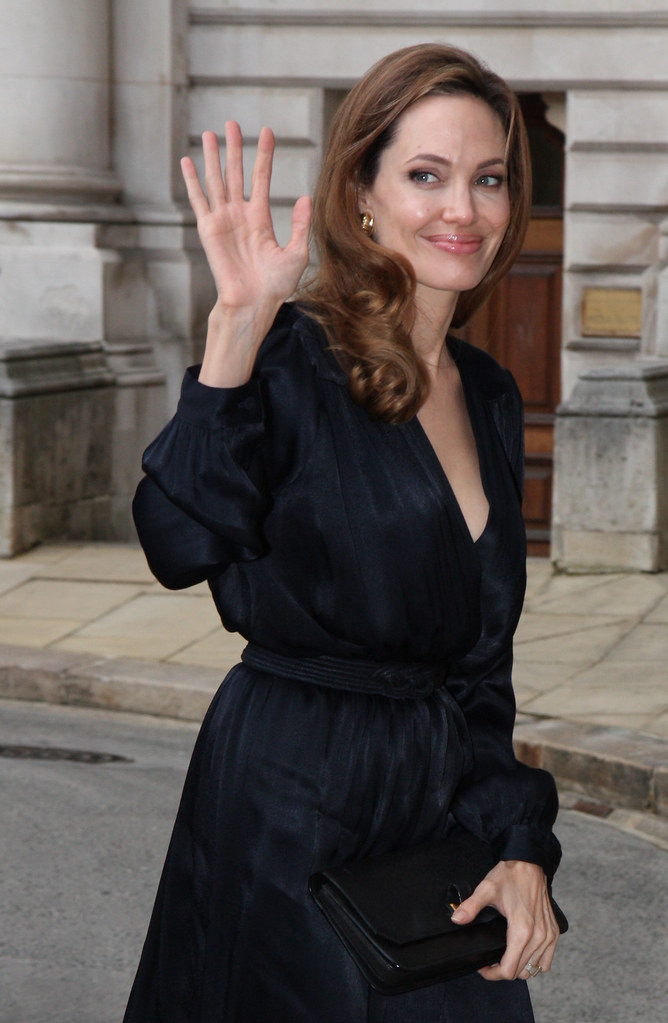
4. Critical Acclaim and Award-Winning Performances: The Evolution of an Actress
Angelina Jolie’s career truly began to soar as the 1990s drew to a close, with a series of critically acclaimed performances that brought her significant industry recognition. Her prospects improved dramatically after winning a Golden Globe for portraying Cornelia Wallace, wife of Alabama Governor George Wallace, in TNT’s George Wallace (1997). This performance was lauded, with Lee Winfrey of The Philadelphia Inquirer considering it a highlight of the film, and it earned Jolie a nomination for a Primetime Emmy Award, signaling a new phase of critical acknowledgment.
The momentum continued with her powerful depiction of supermodel Gia Carangi in HBO’s Gia (1998). This television film was a raw look at Carangi’s life, chronicling her descent into heroin addiction and eventual death from AIDS. Jolie’s performance was transformative, gaining her widespread recognition for its intensity and emotional depth. Vanessa Vance of Reel.com retrospectively noted that “Jolie is fierce in her portrayal—filling the part with nerve, charm, and desperation—and her role in this film is quite possibly the most beautiful train wreck ever filmed.” For Gia, Jolie secured her second consecutive Golden Globe Award, an Emmy Award nomination, and her first Screen Actors Guild Award, firmly establishing her as a serious dramatic actress.
Jolie’s dedication to her craft during this period was remarkable, often employing Lee Strasberg’s method acting, staying in character even between scenes. This immersive approach led her to briefly step away from acting after Gia, feeling she had “nothing else to give,” to study directing and screenwriting in New York. However, encouraged by her awards and positive reception, she soon returned to the screen, starring in the ensemble drama Playing by Heart (1998), where her performance as a “desperate club crawler” was singled out for praise. She also earned the Breakthrough Performance Award from the National Board of Review, a testament to her rapidly ascending status.
Her most defining role of this era came in 1999 with Girl, Interrupted, where she played Lisa, a sociopathic patient in a psychiatric hospital. Her portrayal was magnetic and unforgettable, earning her glowing reviews, with Emanuel Levy of Variety calling her “excellent as the flamboyant, irresponsible girl who turns out to be far more instrumental than the doctors in Susanna’s rehabilitation.” Roger Ebert famously described her as “one of the great wild spirits of current movies, a loose cannon who somehow has deadly aim.” For this iconic performance, Jolie swept the major awards, winning the Golden Globe Award for Best Supporting Actress – Motion Picture, the Screen Actors Guild Award for Outstanding Performance by a Female Actor in a Supporting Role, and ultimately, the Academy Award for Best Supporting Actress, solidifying her place among Hollywood’s elite.

5. Raider of Hearts and Box Offices: Angelina Jolie’s Transformation into a Global Action Icon
While Angelina Jolie had garnered immense critical praise for her dramatic prowess and had even won an Academy Award, she had, until the early 2000s, rarely found films that appealed to a massive, global audience. That all changed dramatically with the release of Lara Croft: Tomb Raider in 2001. This adaptation of the popular video game series was a pivotal moment, transforming her from a respected actress into an international superstar and formidable female action hero, a role then largely dominated by male actors. The preparation was extensive, requiring her to master an English accent and undergo rigorous martial arts training, showcasing her commitment to authenticity.
Despite receiving mostly negative reviews from critics for the film itself, Jolie’s physical performance and commanding presence as the archaeologist-adventurer Lara Croft were almost universally lauded. John Anderson of Newsday eloquently stated that “Jolie makes the title character a virtual icon of female competence and coolth,” capturing the essence of what made her portrayal so impactful. She embodied the adventurous spirit and formidable capabilities of Lara Croft with an intensity that resonated deeply with audiences worldwide, proving her ability to carry a major blockbuster.
The film’s commercial success was undeniable. Lara Croft: Tomb Raider became an international hit, grossing an impressive $274.7 million worldwide. This monumental financial success cemented her status as a global box office draw and established her reputation as a leading female action star, breaking new ground for women.
Following this triumph, Jolie ventured into other projects, some more successful than others critically and commercially. Films like Original Sin (2001) and Life or Something Like It (2002) were less well-received, but her drawing power remained. By 2002, she had firmly established herself among Hollywood’s highest-paid actresses, commanding $10–15 million per film for the next five years, a clear indication of her immense market value. She reprised her role in the sequel, Lara Croft: Tomb Raider – The Cradle of Life (2003), which, though not as lucrative as the original, still grossed $156.5 million. Her ability to consistently draw audiences confirmed her enduring appeal and solidified position as a global cinematic icon.
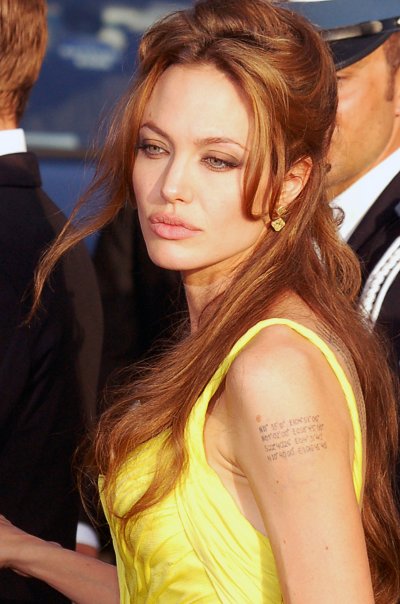
6. Reigning Supreme: Jolie’s Era as Hollywood’s Highest-Paid and Most Sought-After Star
Angelina Jolie’s journey from a critically acclaimed dramatic actress to one of Hollywood’s most bankable and highest-paid stars is a testament to her unparalleled screen presence and undeniable charisma. While she had already carved out a niche with her intense performances, it was the 2005 action-comedy *Mr. & Mrs. Smith* that truly propelled her into a new stratosphere of commercial success and global recognition. This film, where she starred opposite Brad Pitt, was more than just a box office hit; it was a cultural phenomenon that leveraged their electrifying chemistry into cinematic gold, changing the landscape of her career forever.
*Mr. & Mrs. Smith* wasn’t just a film; it was an event. Audiences flocked to see the on-screen (and eventually off-screen) dynamic between Jolie and Pitt as a bored married couple who discover they are both secret assassins. The critical consensus, despite mixed reviews for the plot, overwhelmingly lauded the “thermonuclear screen chemistry” between the two leads. It wasn’t just good acting; it was compelling, captivating, and utterly irresistible. The film’s staggering worldwide gross of $478.2 million made it the seventh-highest-grossing picture of the year and secured its place as Jolie’s highest-grossing live-action film for a decade, solidifying her status as a global box office magnet.
This immense commercial appeal translated directly into her earning power, firmly establishing her among Hollywood’s elite. By 2002, she was commanding an impressive $10–15 million per film, a figure that climbed even higher, reaching $15–$20 million per film by 2008. While many actresses faced salary cuts during this period, Jolie’s unique box office draw allowed her to negotiate up to $20 million plus a percentage of the profits, a clear indicator of her formidable market value. This era saw her continue to dominate the action genre with films like *Wanted* (2008), which earned $341.4 million worldwide, and *Salt* (2010), grossing $293.5 million, both cementing her as a premier female action star who could single-handedly attract massive international audiences.
Her ability to appeal to diverse demographics, extending beyond the action genre, was brilliantly showcased with *Maleficent* in 2014. This live-action re-imagining of Disney’s *Sleeping Beauty* saw Jolie inhabit the titular villain with magnetic power and effortless grace. Critics praised her performance as the “heart and soul” of the film, and audiences responded overwhelmingly. *Maleficent* earned nearly $70 million in its opening weekend in North America and over $100 million in other markets, ultimately becoming her highest-grossing film ever with a worldwide total of $757.8 million. This monumental success underscored her incredible versatility and enduring appeal, proving she reigned supreme across all cinematic landscapes.

7. **Mastering the Dramatic and Moving Behind the Camera: Her Versatility as a Performer and Director**
Even as Angelina Jolie commanded the box office, she never abandoned her roots in compelling dramatic performances, consistently seeking out roles that challenged her and moved audiences. After *Mr. & Mrs. Smith*, she delivered a powerful, critically praised portrayal of Mariane Pearl in the documentary-style drama *A Mighty Heart* (2007), chronicling the kidnapping and murder of Pearl’s husband. Her performance, described as “well-measured and moving,” earned her Golden Globe and Screen Actors Guild Award nominations, showcasing her profound ability to inhabit complex, real-life characters with respect and emotional depth, despite facing some criticism over the casting.
Her dramatic prowess reached new heights with Clint Eastwood’s *Changeling* (2008), a role that garnered her widespread critical acclaim and an Academy Award nomination for Best Actress. Playing Christine Collins, a mother whose son goes missing and is later replaced by an impostor, Jolie truly shone, with critics noting how she “really shines in the calm before the storm, the scenes when one patronizing male authority figure after another belittles her at their peril.” This performance was a masterclass in controlled intensity and emotional vulnerability, further solidifying her reputation as a serious, versatile actress. More recently, in Pablo Larraín’s biographical film *Maria* (2024), about opera singer Maria Callas, Jolie delivered what has been called a “career-best performance,” embodying Callas with “an ethereal presence, grasping the intense grief” of the iconic singer, earning her another Golden Globe nomination for Best Actress.
Beyond her captivating work in front of the camera, Jolie expanded her artistic vision to directing and writing, beginning with her feature directorial debut *In the Land of Blood and Honey* (2011). This ambitious love story, set during the Bosnian War, was deeply personal, conceived after her visits to Bosnia and Herzegovina as a UNHCR Goodwill Ambassador. Her commitment to authenticity was unwavering, casting only actors from the former Yugoslavia and incorporating their wartime experiences. The film, nominated for a Golden Globe for Best Foreign Language Film, highlighted her dedication to shedding light on forgotten conflicts and earned her honorary citizenship of Sarajevo for raising war awareness.
She continued to demonstrate her formidable talent behind the camera with *Unbroken* (2014), a compelling World War II survival drama, and *First They Killed My Father* (2017), a powerful drama set during Cambodia’s Khmer Rouge era. For *First They Killed My Father*, she co-wrote the screenplay, ensuring an authentic narrative told through an exclusively Khmer cast and script, earning Golden Globe and BAFTA nominations for Best Foreign Language Film. Her work *Without Blood* (2024), which she wrote, produced, and directed, further showcases her continued commitment to human stories. These projects reveal a filmmaker deeply committed to meaningful storytelling, often drawing attention to humanitarian causes and ensuring the voices of the marginalized are heard on a global stage.
Jolie’s versatility extends even further into producing. In 2024, she produced the musical *The Outsiders*, which transferred to Broadway and ultimately won the prestigious Tony Award for Best Musical. This achievement demonstrates her keen eye for compelling narratives and her dedication to bringing impactful stories to life across various mediums, cementing her multifaceted influence not just as an actress, but as a formidable force in the entire entertainment industry. Her ability to seamlessly transition between demanding roles and complex directorial projects speaks volumes about her profound artistic dedication.

8. A Voice for the Voiceless: Decades of Dedicated Humanitarian Service with the UNHCR
Angelina Jolie’s transformation from a Hollywood superstar to a devoted humanitarian is one of the most compelling chapters of her life. The seeds of her profound commitment were sown during the filming of *Lara Croft: Tomb Raider* in war-torn Cambodia in 2001. This experience, which she later described as having given her a “greater understanding of the world,” profoundly impacted her. Upon her return, she didn’t just feel sympathy; she actively sought out information, contacting the United Nations High Commissioner for Refugees (UNHCR) to learn about international trouble spots. This immediate, proactive response marked the beginning of an extraordinary journey of service.
Her initial field visits were intense and eye-opening. In February 2001, she embarked on an 18-day mission to Sierra Leone and Tanzania, witnessing the brutal realities of displacement firsthand, a sight that left her “shocked.” She swiftly followed this with two weeks in Cambodia and a visit with Afghan refugees in Pakistan, where her immediate response was not just emotional but also financially impactful. She donated an astounding $1 million in response to a UNHCR emergency appeal, the largest private donation the organization had ever received at that time. Her commitment was so absolute that she covered all costs related to her missions and insisted on sharing the same rudimentary working and living conditions as UNHCR field staff, showing a genuine empathy that resonated deeply.
On August 27, 2001, her dedication was formally recognized when she was named a UNHCR Goodwill Ambassador at their Geneva headquarters. For the next decade, Jolie embarked on an astonishing more than 40 field missions, meeting with refugees and internally displaced persons in over 30 countries. Her philosophy was clear: to visit “forgotten emergencies,” crises that had slipped from the media’s attention. She bravely traveled to active war zones, including Darfur during the Darfur conflict, the Syrian-Iraqi border during the Second Gulf War—where she met with U.S. and multinational forces—and Kabul during the war in Afghanistan, often putting herself in dangerous situations to bear witness and provide aid.
Her commitment went beyond mere visits; she sought to deepen her practical involvement. In 2004, she began taking flying lessons, not for leisure, but with the specific aim of ferrying aid workers and food supplies around the world. By May 2014, she had acquired a pilot’s license and owned a Cirrus SR22 and a Cessna 208 Caravan aircraft, illustrating her incredible dedication to hands-on humanitarian efforts. Her tireless work and profound understanding of refugee issues led to her promotion on April 17, 2012, to the rank of Special Envoy to High Commissioner António Guterres, the first person to hold such a position within the organization. This expanded role granted her authority to represent UNHCR at a diplomatic level, focusing on major refugee crises, and she continued to undertake numerous field missions advocating on behalf of the displaced.
After more than two decades of dedicated service, Angelina Jolie resigned from her ambassadorship in December 2022. However, her departure from the formal role did not signal an end to her advocacy. In her announcement, she firmly pledged to continue her unwavering commitment to advocating for refugees and local organizations directly. Her legacy within UNHCR is one of profound impact, raising global awareness, inspiring countless individuals, and offering tangible support and a powerful voice to those who have been marginalized and silenced by conflict and displacement.
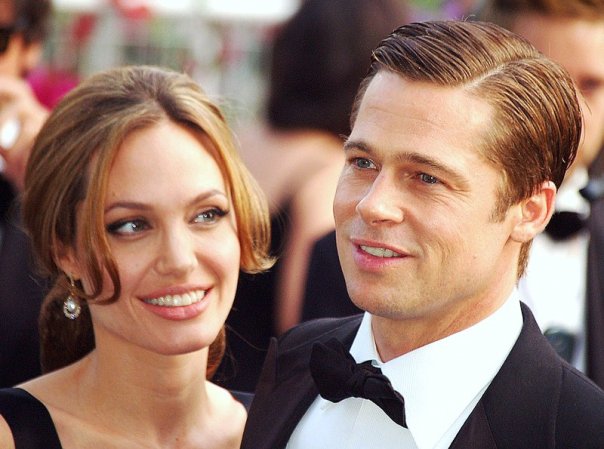
9. Beyond the Screen: Angelina’s Commitment to Conservation and Community Development
Angelina Jolie’s humanitarian vision extends far beyond the plight of refugees, encompassing a deep commitment to environmental conservation and sustainable community development. This dedication took a particularly personal turn in 2003, driven by her desire to connect her Cambodian-born adopted son, Maddox, with his cultural heritage. While purchasing a traditional house on 39 hectares in the northwestern province of Battambang, she encountered a sobering reality: the adjacent Samlout national park in the Cardamom Mountains was being ravaged by poachers, threatening endangered species. Her response was swift and impactful, transforming a personal connection into a global initiative.
Recognizing the urgent need for intervention, Jolie purchased the park’s 60,000 hectares, effectively turning the vast area into a vital wildlife reserve. She named this groundbreaking initiative the Maddox Jolie Project, a direct reflection of her son’s influence on her conservation efforts. This project was not merely about land acquisition; it was a comprehensive effort to protect biodiversity, restore natural habitats, and engage local communities in sustainable practices. It represented a tangible investment in the future of Cambodia’s natural resources and a powerful statement against illegal wildlife trade.
In November 2006, the scope of her vision expanded even further. The Maddox Jolie Project was renamed the Maddox Jolie-Pitt Foundation (MJP), signifying a broadened mission. Inspired by a meeting with renowned economist Jeffrey Sachs, founder of Millennium Promise, at the World Economic Forum in Davos, Jolie committed to creating Asia’s first Millennium Village in accordance with UN development goals. Her home in Cambodia became the MJP field headquarters, symbolizing her deep personal immersion in the project. This ambitious endeavor went beyond conservation to embrace a holistic approach to community upliftment, integrating environmental protection with social and economic progress.
By mid-2007, the MJP was a thriving ecosystem of change. Some 6,000 villagers and 72 employees, many of whom were former poachers now employed as rangers, lived and worked across ten previously isolated villages. The foundation, entirely funded by Jolie, established schools, built roads, and even created a soy milk factory, providing education, infrastructure, and economic opportunities that fostered self-sufficiency and improved quality of life. This remarkable initiative transformed a threatened landscape into a model of sustainable development, proving that conservation and human well-being are intrinsically linked and can flourish together with dedicated effort.
Beyond her Cambodian efforts, Jolie’s passion for wildlife conservation also led her to become a patron of the Harnas Wildlife Foundation. Located in the Kalahari Desert, this foundation operates a crucial wildlife orphanage and medical center. Her connection with Harnas began during the production of her film *Beyond Borders* (2003) in Namibia, where she witnessed their vital work firsthand, especially with rescued vultures featured in the film. Furthermore, in December 2010, Jolie and Brad Pitt established the Shiloh Jolie-Pitt Foundation, dedicated to supporting conservation work, underscoring their shared commitment to protecting the planet and its diverse species for future generations. Her consistent, hands-on involvement with these foundations highlights her profound and lasting commitment to environmental stewardship and global community welfare.

10. **The Enduring Legacy of an Icon: Reflecting on Angelina Jolie’s Multifaceted Impact and Future Endeavors**
Angelina Jolie stands as an undeniable icon, a figure whose immense impact transcends the conventional boundaries of Hollywood stardom. Her legacy is not simply defined by her Academy Award-winning performances or her record-breaking box office successes, but by the powerful synthesis of her artistic achievements with an unwavering, deeply personal commitment to global humanitarianism. She has masterfully navigated the complex worlds of entertainment, filmmaking, and international advocacy, using her formidable platform not just for personal gain, but as a megaphone for the voiceless and a catalyst for profound change.
Consistently cited as one of the most powerful and influential people in the American entertainment industry, and frequently named the world’s most beautiful woman by various publications, Jolie’s public persona is as magnetic as her private passion for making a difference. Her ability to command attention, whether on the red carpet or in a refugee camp, has allowed her to draw unprecedented focus to critical global issues. This dual capacity to captivate and to educate defines her unique position, allowing her to bridge the gap between celebrity and substantive impact, inspiring millions to look beyond themselves and consider the wider world.
Her journey, marked by intense personal struggles from a turbulent childhood and adolescence to public divorces and health battles, reveals a woman of extraordinary resilience and continuous evolution. From a “punk kid with tattoos” to an esteemed Special Envoy for the UNHCR, her personal narrative is one of profound transformation, demonstrating the human capacity for growth, empathy, and overcoming adversity. Each challenge has seemingly fortified her resolve, cementing her image not just as a star, but as a survivor and an advocate who continually channels her experiences into meaningful action.
As Angelina Jolie continues her work, both in front of and behind the camera, and through her ongoing advocacy for human rights and environmental protection, her legacy is far from complete. She is an artist who demands more from her craft, a humanitarian who expects more from the world, and an individual who constantly seeks to make a tangible difference. Her influence will undoubtedly endure, not just in the annals of cinema, but in the countless lives she has touched and the causes she has championed, solidifying her place as a truly multifaceted and inspiring global force for generations to come.

